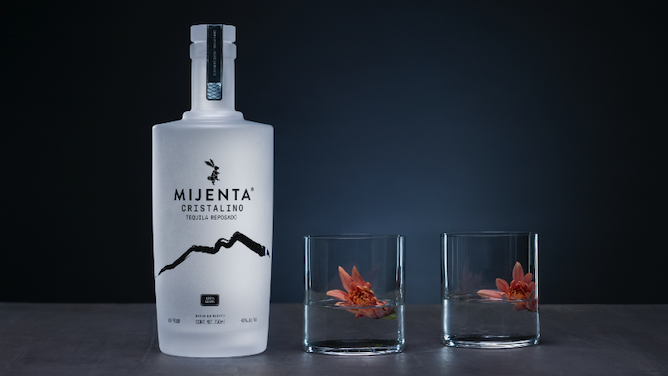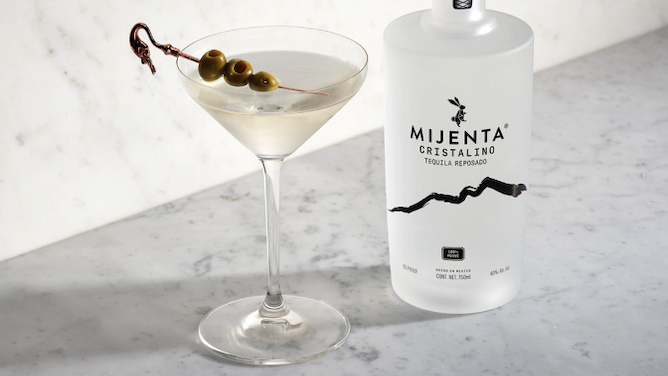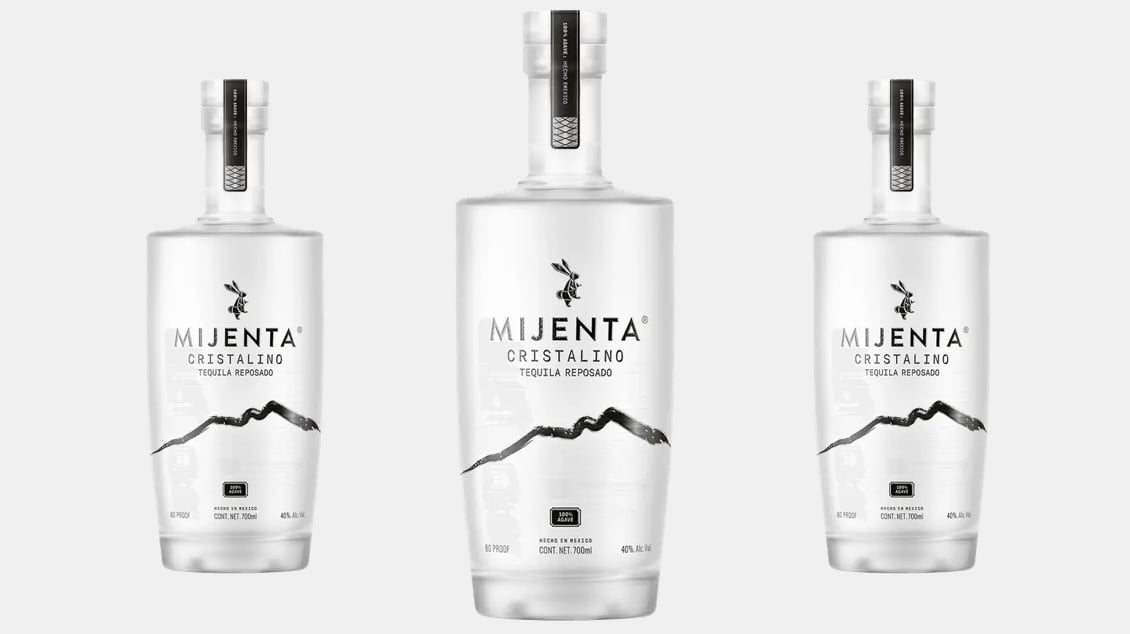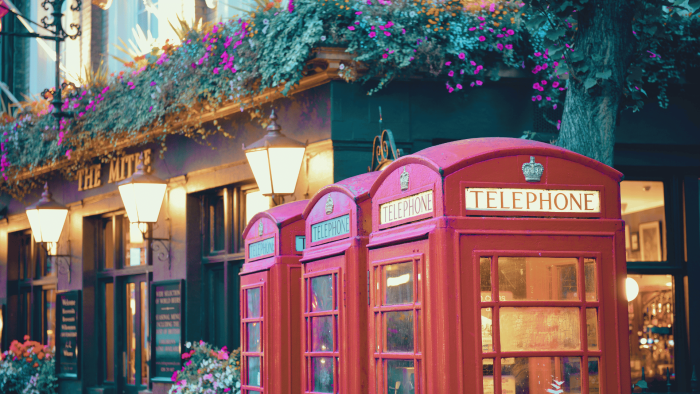Welcome to Add to Bar Cart, where Cool Material’s writers and editors recommend the spirits that they’re enjoying most right now.
The first time I tried a cristalino tequila was in the mid 2010s while working as a writer for an alcohol publication. It was Don Julio 70, one of the first cristalinos to reach the United States starting with a small batch in 2011, and was a curious blip in a tasting of the full Don Julio line up. Despite continuing to write about spirits for a living, I didn’t see much more of it until I was in Mexico for a work trip in 2021. The category still hadn’t become widely known in the US, but in Mexico, I learned while reporting a story on its popularity in the country, cristalino had been a popular top-shelf sipping tequila for a decade.
Fast forward to today and cristalino remains a small, but growing (in a press release, Mijenta notes the category grew 39 percent year-over-year), subcategory of tequila. A new limited-edition cristalino from Mijenta aims to broaden consumer awareness by taking a different approach to how the style is presented: an ingredient for elevated cocktails that typically use gin or vodka instead of the standard high-priced neat pour used for most cristalinos.
The release initially took me by surprise. Mijenta Tequila started in September 2020. The whole ethos for the brand’s blanco tequila is centered around highlighting the agave, and in 2023 its parent company, Altos Planos, won the International Wine and Spirits Competition Agave Producer Trophy.
Mijenta is guided by maestra tequilera Ana Maria Romera Mena–one of the few leading women in the industry, and one of the most respected for her refined nose and palate. Her 2007 book, “The Aromas of Tequila: The Art of Tasting,” introduced a tequila aroma wheel that’s now widely used. Mijenta Blanco, a personal favorite of mine, goes all-in on pure agave flavors by fermenting with hand-selected yeast and bottling the spirit unfiltered. Along with the reposado and añejo tequila from the brand, its previous line up is designed to showcase the terroir of the Los Altos agaves with low intervention and no additives.
The cristalino category, on the other hand, is about as filtered as it gets. After spending time in barrel, the tequila goes through a thorough charcoal filtering process that strips out the color–and, in what turns many tequila lovers off of the category, a significant amount of the natural agave flavor. What remains is a tequila that’s clear like a blanco but has stronger sweet vanilla and oak barrel notes instead of grassy, green, peppery notes from the plant.
But the purpose is more to show that a tequila can be adapted for cocktails not traditionally associated with the spirit. And in that sense, it’s found an interesting niche.
ABV: 40 percent
Price: $119.99
Where it’s available: Through Mijenta’s site and Sip Tequila

How Mijenta Cristalino Tequila Is Made
Mijenta uses ripe Blue Weber agaves from the highlands of Jalisco. Those are crushed, fermented, and distilled at NOM 1412, the same Arandas, Jalisco, distillery that makes respected brands like Correlejo.
The Mijenta website makes the concept of terroir clear right on its homepage with wording like “terroir is just as important to tequila as it is to wine,” and “manipulating the aroma, taste, body, or color with additives defeats the purpose of tequila.” Agaves in the highlands are hit with plenty of sunlight and experience cooler nights than those in the lowlands. The clay-heavy soil in the region is high in iron and other minerals, and the brand’s agaves never touch pesticides or herbicides.
Mijenta is a sustainability leader (in 2022 it was the only tequila to earn a B-Corp certification, one of the highest sustainability certifications around). Ten percent of the agaves are allowed to flower to help with genetic variation, and the packaging incorporates reusable and recycled materials throughout.
After distillation, the spirit is aged in symphony barrels—an artsy term for barrels that use different woods for the staves. Mijenta’s barrels use all American Oak, but from different regions: Minnesota, Missouri, Pennsylvania, and Virginia. There, it rests for about eight months, putting it in the reposado category. Finally, it’s charcoal filtered and proofed down to 40 percent before being bottled.

What Mijenta Cristalino Tequila Tastes Like
A strong vanilla note was clear as soon as I poured the cristalino into my glass. On closer inspection, a hint of sweet roasted agave alongside coconut and caramel. The taste is similar, though there isn’t a single dominating note that takes over. Like with Mijenta’s other tequilas, everything feels balanced. Unlike those other tequilas, the flavors are much more muted. I’m reminded of vodkas that use sugarcane as the base ingredient instead of grains. It’s not a neutral spirit by any means, but it does go down easy.
After trying it neat, I brought the tequila out for its true purpose: cocktails. Mijenta lists suggested cocktails on its site. Traditional tequila cocktails like a margarita or a paloma do not make the list. Instead, there’s a tequila take on an espresso martini, and a dirty martini called a dirty highlands that uses cristalino instead of vodka. Another, el yerberito, uses cristalino, yellow chartreuse, vermouth, salt, and lavender bitters. All three are served up in a martini glass, and all (as well as a standard martini) were interesting variations on drinks I know well.
Why You Should Add Mijenta Cristalino Tequila To Your Bar Cart
It’s an expensive option for something that’s made to be mixed. That said, it does offer something new and worth trying if you’re into vodka cocktails. They’re far more interesting than the vast majority of vodkas available, and it’s a nice special occasion spirit to bring out at a cocktail party for people who think tequila is primarily for citrus-forward drinks.
Additionally, it’s an attractive bottle sitting on any home bar. The frosted glass is Mad Men worthy, with minimalist black lettering, a brush-stroke mountain, and Mijenta’s mischievous looking bunny logo on the front.




